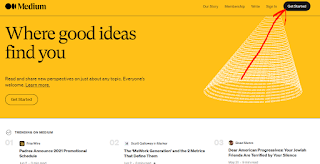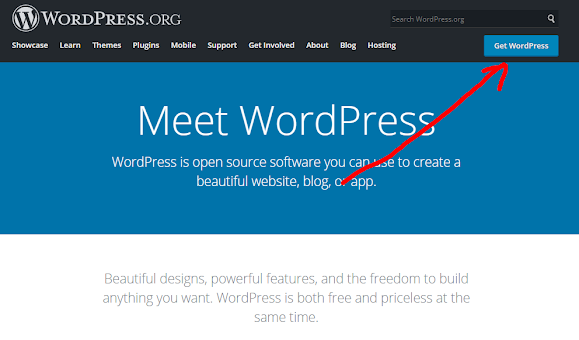8 Best Free 2021 Blogging Sites to Build Your Blog for Free
1. (www.linkedin.com)
2. (www.wix.com)
3. (www.weebly.com)
4. (www.medium.com)
5. (www.blogger.com)
6. (www.tumblr.com)
7. (www.jimdo.com)
8. (www.wordpress.org)
1. (www.linkedin.com)
About that second thing – the audience – what’s great about LinkedIn’s user base is that those are highly focused users, professionals, and business owners. In fact, it’s reported that more than 30 million businesses are active on LinkedIn. And they’re not just there for the sake of it.
From a technical point of view, publishing on LinkedIn is easy. Just go to your LinkedIn feed and use the “Start a post” widget at the top of the page. To convert your status into a full post, click on “Write an article on LinkedIn” to open the full-screen editing window.
In short, LinkedIn just works as a platform where you can get exposure, and this makes it one of the best free blogging sites of them all.
This is where you can find all the editing tools that you’re used to – for text formatting, adding images, and more.
You probably didn’t see this one coming. LinkedIn isn’t most people’s first choice when considering which of the free blogging sites to choose. That being said, it really does deserve some attention!
2. (www.wix.com)
If you go with the second option, all you need to do is to find a beautiful template and start customizing everything on the front-end, in a live preview mode. To launch a Wix blog, just sign up and make a choice: you can either let the Wix AI create a site for you based on a questionnaire or build your blog yourself – which includes selecting a template and arranging the layouts via the WYSIWYG editor.
When you think the site is ready, click Publish and start blogging your stories. After publishing, you can return anytime to edit the content blocks.
You can add multiple elements to your pages, from multimedia widgets to backgrounds, menus, typography, forms, video boxes, etc.
3. (www.weebly.com)
Weebly provides sidebars, media boxes, forms, ad spaces, social media icons, newsletter subscriptions, and many more. Moreover, the platform comes with built-in analytics and lets you use your own customized domain (for which you need to pay)
If you want to add a certain button, you can simply drag it to the page and customize it. The same happens with photo galleries, slideshows, and any other multimedia element.
Weebly is another website builder that you can use not only to blog but also to sell products or showcase your portfolio. It is somewhat similar to Wix to the extent that it provides a WYSIWYG editor with drag-and-drop elements.
On the free plan, you get five custom pages, a Weebly subdomain, 500MB storage, and ad spaces.
4. (www.medium.com)
Unlike most other free blogging sites, the big advantage of Medium is that your articles will be exposed to a wide audience since the platform is visited by 60 million readers (*) per month (and the number increases every year).
Medium is a multipurpose platform tackling diverse topics, where anyone with an account can write.
That is, you’re not really building your own “space” like you would with WordPress.
It’s super simple to use – you pretty much just sign up and start writing. But the downside is that all your content is on Medium.
5. (www.blogger.com)
In general, Blogger has simple appearance options, so the focus stays more on the writing part.
Blogger delivers a bunch of themes to choose from, each providing different skins, advanced color filtering, and various minimalist gadgets (aka widgets). But nothing too fancy or any advanced design customization.
A nice part about this site is that it comes with ad spaces that you can place within your content pieces.
After you create it (which is simple), you have to pick one of the default themes and you can start writing your thoughts down. This platform has an interface similar to a Google+ profile and the editor looks like a Word page.
It’s a solid solution for personal blogs, but it’s not the best resource for professional use. It works just like the other hosted platforms: you need to create an account first in order to use it.
6. (www.tumblr.com)
The thing with Tumblr is that it is purely for personal use and wouldn’t put up a great solution if you have business-oriented plans. It is simplistic, offers basic customization options and, like I said earlier, has more of a social media vibe.
Just like a regular blogging platform, it provides multiple post formats for different types of content.
Tumblr is one of the original free blogging sites on the web. It’s just a bit ‘milder’ than the others on the list. Unlike the rest of the platforms that are mostly created for publishing purposes, this one here is more oriented to multimedia or social media-like content.
The interface of Tumblr is more playful and is easy to get started with – you can simply sign up and then you’re allowed to start posting.
7. (www.jimdo.com)
This means that you need to go to every content box on a live page and edit it on the spot, without being redirected to another page. The footer and the logo can be edited the same way.
An important aspect of Jimdo, though, is that it is a page builder: you create blog posts right via the front-end and not via an editor (like the other blogs do).
When it comes to the content elements, you have a few options: simple text, text with image, photo gallery, columns, buttons, etc.
After you check these options, your site is automatically created based on your picks. The downside of Jimdo is that you can’t have a custom domain (at least not for free) and you can’t remove the ads unless you upgrade.
Jimdo is more than just an example of free blogging sites. However, in its free version, blogs are the most recommended, given Jimdo’s basic features. So you can quickly create a website with Jimdo by going through a few items (you take a basic questionnaire about your site’s purpose).
In short, your article will be entirely built from many individual elements that you will edit separately. Text, picture, button… the order is up to you.
Via the left sidebar, you can make more tweaks, such as adding the post’s date, title, category, status (published or draft), summary, and image preview.
8. (www.wordpress.org)
At this very moment, Bluehost is the cheapest sensible WordPress hosting you can find out there.
This is where Bluehost comes into play. Not only is it very cheap (just $2.95 per month on the Basic plan), but it also provides solid features, including a free domain name, 50GB of disk space, unmetered bandwidth, free SSL, and 100MB of email storage per account.
You also have to host the software yourself. While you can find some free WordPress hosting, a better long-term strategy is to pay a moderate amount for a solid WordPress host.WordPress.org is the king of free blogging sites. It is a free platform, but you need to build the site mostly by yourself afterward.
But the flip side is that the setup process is a little bit more hands-on.
Because you’re hosting the WordPress software yourself, you have full control over how your site looks and functions, as well as how you make money from your site.
And especially if your plan is to monetize your blog in any way, the free WordPress.com version will prevent you from doing that.
However, you’re also quite limited in the way you can customize the site.
On the opposite side, there’s WordPress.com, which is the other face of WordPress – a platform used mostly for personal blogs because it’s easy to set up and free (if you’re okay not having a custom domain name).
Considering this, we recommend you get started with Bluehost. There is a 30-day money-back guarantee in place – in case you change your mind with the whole blogging experiment, just ask for a refund.
MORE DETAILS.....................
https://expertin360.blogspot.com/









Post a Comment
If you have any doubts, please let me know.